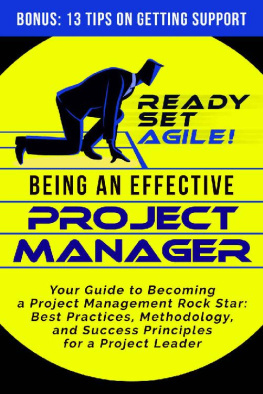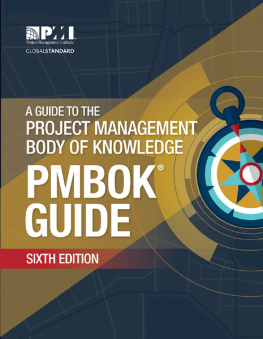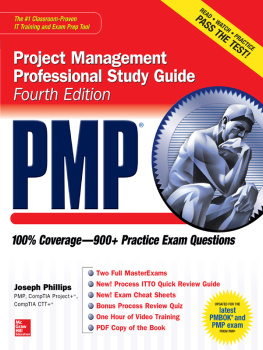Lehmann - Situational project management: the dynamics of success and failure
Here you can read online Lehmann - Situational project management: the dynamics of success and failure full text of the book (entire story) in english for free. Download pdf and epub, get meaning, cover and reviews about this ebook. year: 2017, publisher: CRC Press, genre: Business. Description of the work, (preface) as well as reviews are available. Best literature library LitArk.com created for fans of good reading and offers a wide selection of genres:
Romance novel
Science fiction
Adventure
Detective
Science
History
Home and family
Prose
Art
Politics
Computer
Non-fiction
Religion
Business
Children
Humor
Choose a favorite category and find really read worthwhile books. Enjoy immersion in the world of imagination, feel the emotions of the characters or learn something new for yourself, make an fascinating discovery.

Situational project management: the dynamics of success and failure: summary, description and annotation
We offer to read an annotation, description, summary or preface (depends on what the author of the book "Situational project management: the dynamics of success and failure" wrote himself). If you haven't found the necessary information about the book — write in the comments, we will try to find it.
Lehmann: author's other books
Who wrote Situational project management: the dynamics of success and failure? Find out the surname, the name of the author of the book and a list of all author's works by series.
Situational project management: the dynamics of success and failure — read online for free the complete book (whole text) full work
Below is the text of the book, divided by pages. System saving the place of the last page read, allows you to conveniently read the book "Situational project management: the dynamics of success and failure" online for free, without having to search again every time where you left off. Put a bookmark, and you can go to the page where you finished reading at any time.
Font size:
Interval:
Bookmark:

Situational Project Management
The Dynamics of Success and Failure
Best Practices and Advances in Program Management Series
Series Editor
Ginger Levin
RECENTLY PUBLISHED TITLES
Situational Project Management: The Dynamics of Success and Failure
Oliver F. Lehmann
Ethics and Governance in Project Management: Small Sins Allowed and the Line of Impunity
Eduardo Victor Lopez and Alicia Medina
Becoming a Sustainable Organization: A Project and Portfolio Management Approach
Kristina Kohl
Improving Business Performance: A Project Portfolio Management Approach
Ramani S
Leading and Managing Innovation: What Every Executive Team Must Know about Project, Program, and Portfolio Management, Second Edition
Russell D. Archibald and Shane Archibald
Program Management in Defense and High Tech Environments
Charles Christopher McCarthy
The Self-Made Program Leader: Taking Charge in Matrix Organizations
Steve Tkalcevich
Transforming Business with Program Management: Integrating Strategy, People, Process, Technology, Structure, and Measurement
Satish P. Subramanian
Stakeholder Engagement: The Game Changer for Program Management
Amy Baugh
Making Projects Work: Effective Stakeholder and Communication Management
Lynda Bourne
Agile for Project Managers
Denise Canty
Project Planning and Project Success: The 25% Solution
Pedro Serrador
Project Health Assessment
Paul S. Royer, PMP
The Dynamics of Success and Failure
Oliver F. Lehmann
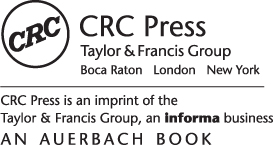
CRC Press
Taylor & Francis Group
6000 Broken Sound Parkway NW, Suite 300
Boca Raton, FL 33487-2742
2016 by Taylor & Francis Group, LLC
CRC Press is an imprint of Taylor & Francis Group, an Informa business
No claim to original U.S. Government works
Printed on acid-free paper
Version Date: 20160524
International Standard Book Number-13: 978-1-4987-2261-2 (Hardback)
This book contains information obtained from authentic and highly regarded sources. Reasonable efforts have been made to publish reliable data and information, but the author and publisher cannot assume responsibility for the validity of all materials or the consequences of their use. The authors and publishers have attempted to trace the copyright holders of all material reproduced in this publication and apologize to copyright holders if permission to publish in this form has not been obtained. If any copyright material has not been acknowledged please write and let us know so we may rectify in any future reprint.
Except as permitted under U.S. Copyright Law, no part of this book may be reprinted, reproduced, transmitted, or utilized in any form by any electronic, mechanical, or other means, now known or hereafter invented, including photocopying, microfilming, and recording, or in any information storage or retrieval system, without written permission from the publishers.
For permission to photocopy or use material electronically from this work, please access www.copyright.com (http://www.copyright.com/) or contact the Copyright Clearance Center, Inc. (CCC), 222 Rosewood Drive, Danvers, MA 01923, 978-750-8400. CCC is a not-for-profit organization that provides licenses and registration for a variety of users. For organizations that have been granted a photocopy license by the CCC, a separate system of payment has been arranged.
Trademark Notice: Product or corporate names may be trademarks or registered trademarks, and are used only for identification and explanation without intent to infringe.
Visit the Taylor & Francis Web site at
http://www.taylorandfrancis.com
and the CRC Press Web site at
http://www.crcpress.com
I dedicate this book to my wife Silvia, whose support for its creation was inestimable.
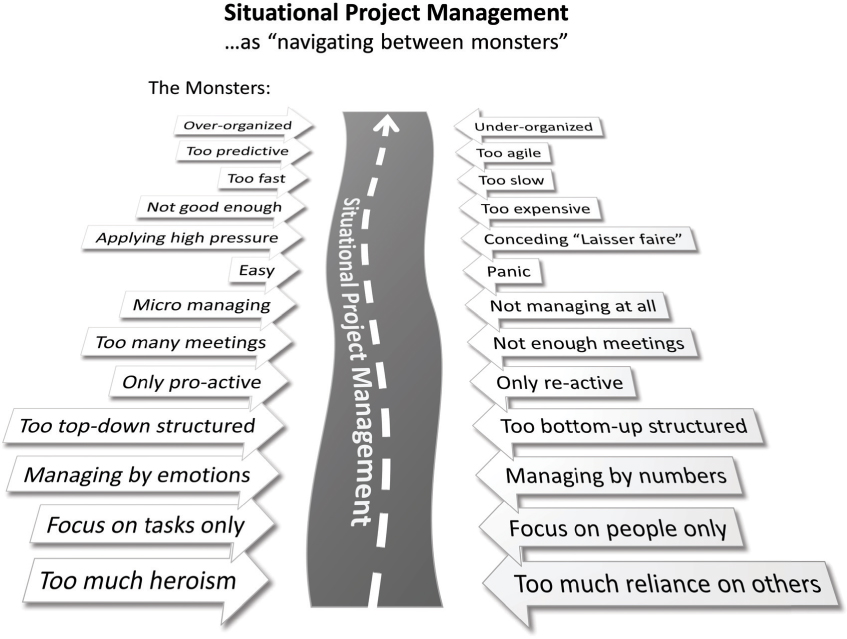
Situational Project Management (SitPM) is a new concept recently introduced into the project management body of knowledge. Little has been written about SitPM, but what has been is fragmented, and a clear definition is yet to be put forth. Some have aligned SitPM to the Situational Leadership Model of Ken Blanchard, probably because of similar terminology; while others, such as myself, believe that it goes much deeper into process than it does into behavioral relationships. Its name is suggestive of project management approaches that are somehow adjusted to or accommodated to align with the nuances and changes in project situations. I have been advocating and writing about such adaptive approaches for nearly 20 years and offer a holistic definition of SitPM from the perspective of my own client experiences. I have felt like one crying in the wilderness until Olivers book came to my attention.
Definition: Situational Project Management
Most project managers would agree that each project is unique. But not all project managers would agree that the best way to manage a unique project would also be unique. Many still cling to the old practice of having a methodology that is applied to all projects. One size fits all is still in common use, and this has proven to be a ticket to complex project failure.
Project uniqueness (i.e., the project situation) is defined by four factors:
Physical characteristics that define the PROJECT
Behavioral characteristics that define the project TEAM
ENTERPRISE environment of the project
MARKET environment receiving the deliverables
These factors establish the requirements that an effective project management must include to be successful. Because of the dynamic nature of all four of these factors, any chosen project management approach will not remain static across the life span of the project. It may be further adapted or replaced altogether.

Figure a The SitPM Spider Chart for a Specific Project
This definition provides a broadly based statement of what constitutes the SitPM Framework and a foundation on which to further develop the processes and practices of SitPM. There is much to be done, but we have a good start on that journey with this book.
The SitPM Framework can be envisioned using a graphic such as the one suggested in .
On a factor scale, 5 represents a highly complex and uncertain level of that factor. So, for this example, Enterprise and Team factor scores are high and require special attention as the specific SitPM Framework recipe for this project is crafted. Project, Enterprise, and Market are discussed in the ECPM Framework book cited at the end of this Foreword. Adding Team and its interaction with Project, Enterprise, and Market completes the SitPM Framework.
It would be a mistake to think that the SitPM Framework presents a Do-It-Yourself management approach. That would be courting chaos. Rather, to be effective, a SitPM recipe must be constrained within a portfolio of tools, templates, and processes. These must be vetted and designed for use specific to the culture and practices of each enterprise. Guidelines may be issued for their appropriate use. Deviations from those guidelines can often require validation by the project manager. Such a project management culture offers a controlled flexibility on the part of the project team and preserves the creativity needed by the project team to succeed in complex project management.
Font size:
Interval:
Bookmark:
Similar books «Situational project management: the dynamics of success and failure»
Look at similar books to Situational project management: the dynamics of success and failure. We have selected literature similar in name and meaning in the hope of providing readers with more options to find new, interesting, not yet read works.
Discussion, reviews of the book Situational project management: the dynamics of success and failure and just readers' own opinions. Leave your comments, write what you think about the work, its meaning or the main characters. Specify what exactly you liked and what you didn't like, and why you think so.






